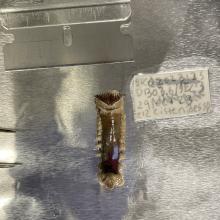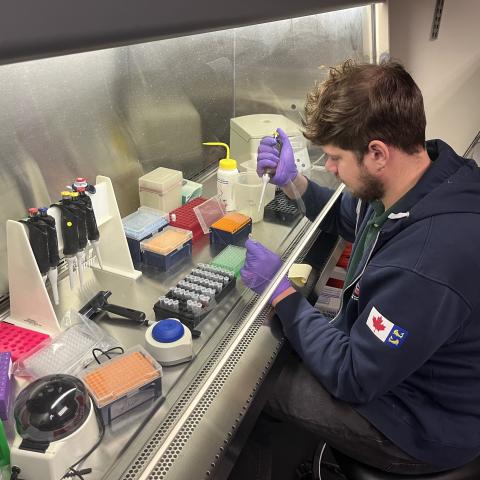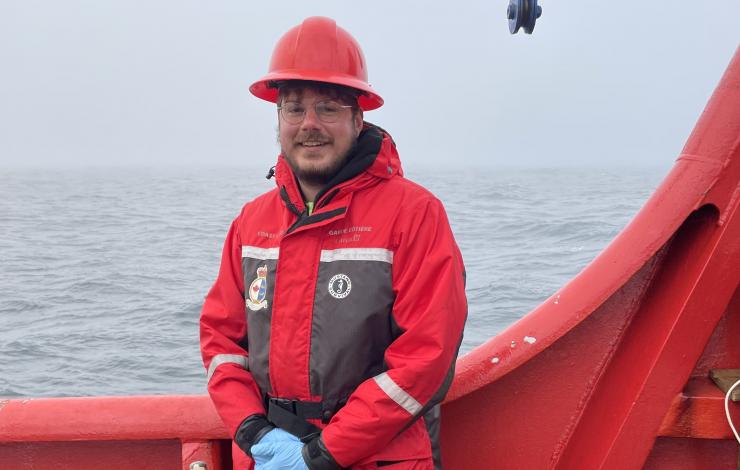My name is Nicholas Silverson, and I am a master’s student at the University of Maryland Center for Environmental Science. My research, funded by the National Science Foundation (NSF) INTERN program and Graduate Research Fellowship (GRF), as well as the Distributed Biological Observatory (DBO), focuses on the biodiversity, community, and population structure of ocean floor animals (benthic macrofauna) in the Pacific Arctic. As part of my project, I visited NOAA PMEL and worked alongside Matthew Galaska, a principal investigator in the PMEL Ocean Molecular Ecology (OME) group, to incorporate a genomics approach to questions of biodiversity and population structure.

I had the chance to participate in two research cruises off the coast of Alaska this past summer on the Sir Wilfrid Laurier, a Canadian Coast Guard ice-capable buoy tender, and the research vessel Sikuliaq, owned by NSF. They were truly incredible experiences; in addition to witnessing enormous flocks of seabirds, pods of whales, and the aurora, I was able to engage with scientists studying this region so affected by climate change. I worked with Matthew Galaska and my thesis advisors, Jacqueline Grebmeier and Lee Cooper, to design a sampling protocol and sampled sites in the DBO, which consists of observation sites from the northern Bering to the Beaufort Seas that document and evaluate biological changes at productive hot spots. With members of my lab group, I collected a broad range of benthic macrofauna specimens and preserved them in ethanol for later study at PMEL. We are aiming to publish underrepresented cytochrome c oxidase subunit I (COI) barcodes to the National Nucleotide Database (NCBI), which will aid other studies in the accurate identification of organisms. Additionally, for two dominant clam species (Bivalvia) and a marine worm (Polychaeta), I collected 8-15 individuals to analyze their population structure and unravel any potential open ocean barriers to dispersal between Southern (Bering Sea) and Northern (Chukchi Sea) populations. This data will complement the analysis of long-term biodiversity and environmental data collected as a part of the DBO.
I spent two weeks at PMEL this past December learning the methodology for DNA extraction and PCR amplification. DNA barcoding of conserved regions of mitochondrial DNA can provide accurate identifications of animals and give insights into barriers to gene flow that morphological study alone cannot provide. Despite some early challenges with low DNA quantities, we successfully extracted DNA from 120 benthic animals and amplified their DNA using a COI primer set. The DNA will be Sanger sequenced this winter, and I’ll return to PMEL for another two weeks to bioinformatically process the data and perform the associated analyses. These data will contribute to understanding how ocean floor communities are changing with warming waters and reduced sea ice, which impacts primary production and energy flow in these seasonally productive ecosystems. My experience at PMEL will form an important part of my master’s program and has been fundamental to my growth as a scientist as I have been learning important methodologies for understanding community structure and change.




